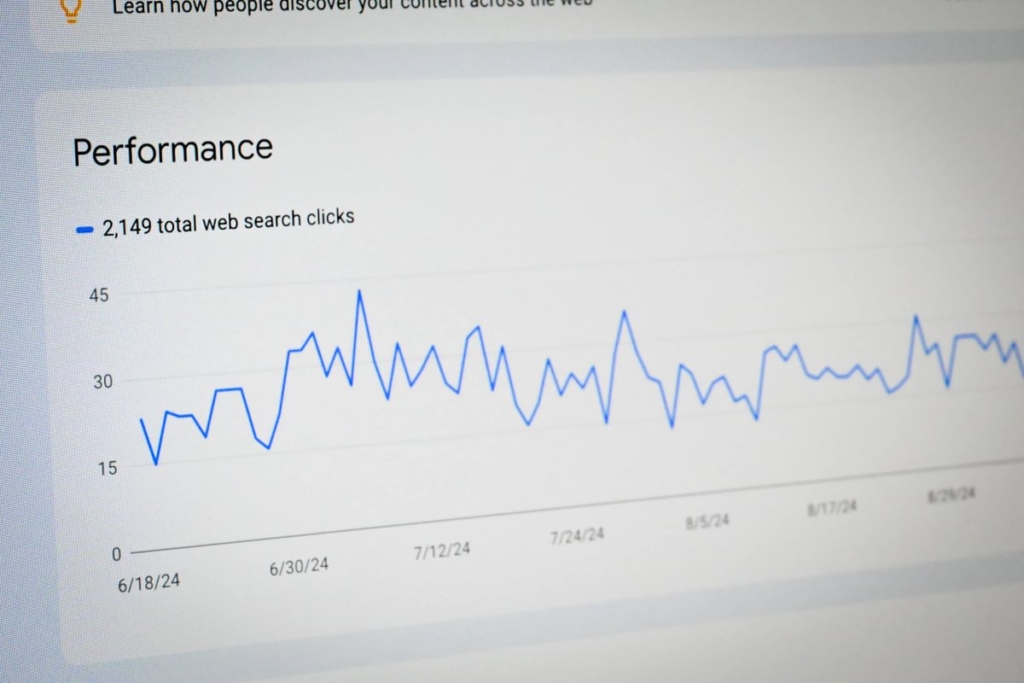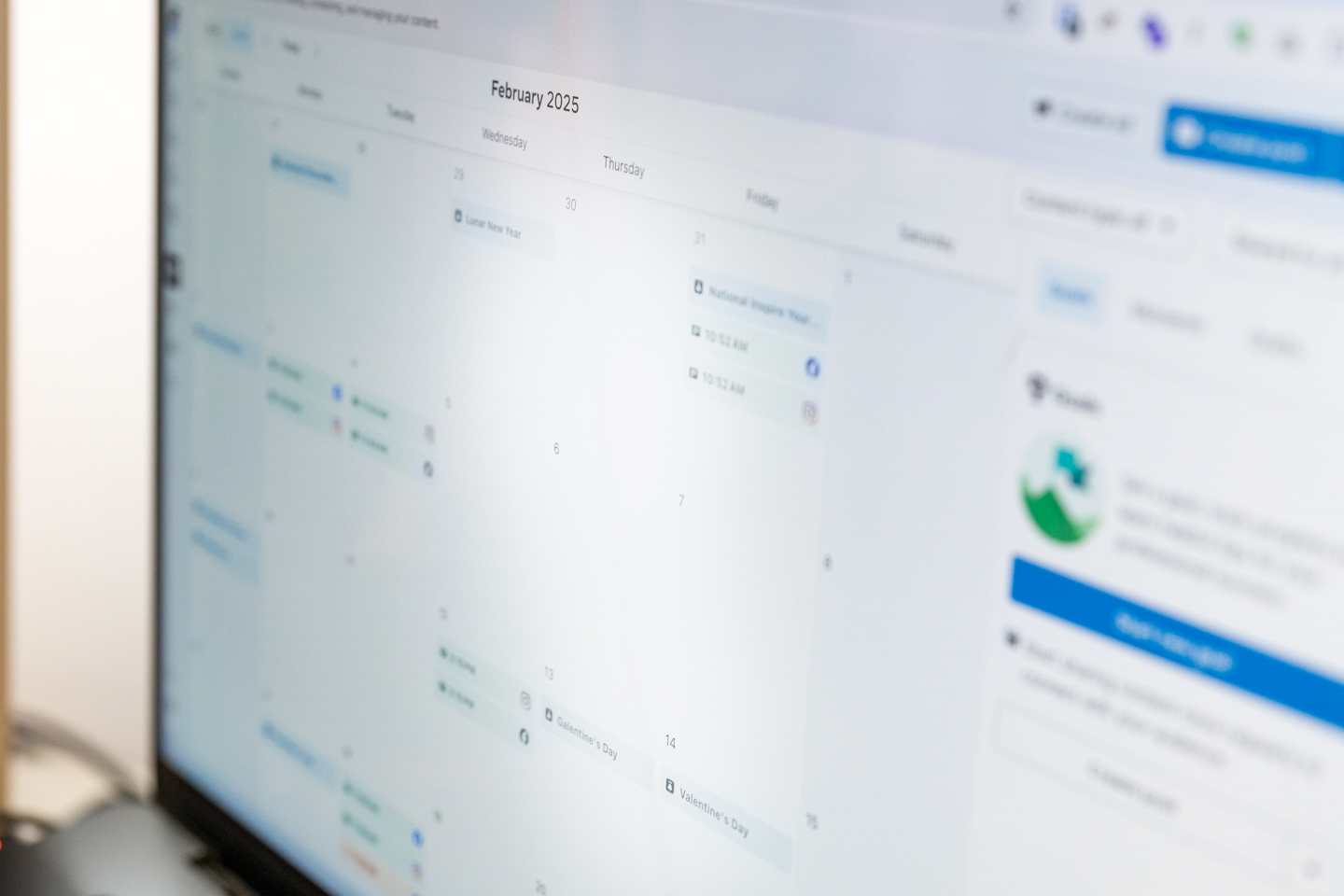
One of the cornerstones of successful marketing relies on the ability to make data-driven decisions. Analyzing data isn’t a suggested extra step—it’s a necessity. Without data, marketing efforts can feel like a shot in the dark, with little insight to guide you in the right direction. There are numerous tools and platforms available to help you collect and interpret this information. However, the sheer volume of data can be overwhelming, making it difficult to understand what you’re seeing and measure the success of your efforts. In this article, we’ll discuss five reasons why analyzing your website and marketing data is crucial, key metrics to pay attention to, and tools that can be used to implement data analysis.

Why is Analyzing Data Important?
Analyzing data is key to any successful marketing campaign. To stay competitive and achieve measurable results, a data-driven approach is essential. Here are five reasons why analyzing the data is so important:
- Measuring Performance: Tracking the effectiveness of your marketing campaigns is vital. By analyzing key metrics, such as keyword rankings or ad performance, you can assess which strategies are working the best, and which ones need to be optimized. The marketing specialist will gather data both before and during campaigns to understand how effective the campaign is. This ongoing measurement allows for adjustments that enhance effectiveness and ensure that your efforts are on the right track.
- Behavioral Insights: Understanding how users interact with your website and content is crucial. Content should be relevant and useful to your target audience, so analyzing which pages visitors are viewing, which content resonates with them, and how they discovered it will enable you to tailor your marketing strategies to better meet their needs and preferences.
- Optimizing Content: Once you identify the types of content that engage your audience—whether on your website or social media—you can optimize your efforts to deliver what they value most. For example, if A/B testing shows that video content generates more engagement than static posts, you can shift your focus to creating more videos. This targeted approach ensures that your content strategy aligns with user preferences, leading to higher engagement and better results.
- Addressing Technical Issues: Data analysis extends beyond content and user behavior; it also encompasses the technical aspects of your website. Metrics like bounce rate and click-through rate can indicate technical problems, such as slow page load times, that may be driving users away. Conducting regular site audits and addressing these issues promptly can significantly improve user experience and overall site performance before you see a significant dip in traffic.
- Maximizing ROI: Ultimately, the goal of data-driven marketing is to maximize your ROI. By analyzing data, you can fine-tune your strategies, allocate your budget more effectively, and focus on the most profitable channels. This approach not only optimizes your current efforts, but also helps you avoid costly mistakes by identifying potential risks early on. With data as your guide, you can confidently move forward, knowing that your marketing investments are yielding the best possible results.
Key Metrics to Pay Attention To
 Traffic
Traffic
Traffic refers to the number of users visiting your website. It can be categorized into five main sources: direct, organic, referral, social, and paid. Understanding where your traffic is coming from allows you to either amplify your efforts on a successful channel or shift focus to other opportunities. Additionally, you can analyze the demographics of your visitors, such as their geographic location, the channel they used to arrive at your site, and what device they used.
 Keyword Rankings
Keyword Rankings
Keyword rankings show where your site appears in search results for specific queries. If you’ve implemented a keyword strategy, this metric is key to evaluating its effectiveness, helping you understand how well your content is performing in search engines.
 Conversion Rates
Conversion Rates
Conversion rate measures the percentage of users who complete a desired action, such as filling out a contact form, signing up for a newsletter, or making a purchase. By adding conversion tracking tags to your website’s code, you can monitor these actions through platforms like Google Tag Manager and Google Analytics. Additionally, CRM (customer relationship management) platforms can track conversions and leads, offering insights into how many leads are turning into actual customers. While tracking conversions in a non-e-commerce context can be complex, it is essential for understanding the effectiveness of your lead generation efforts.
 Bounce Rate
Bounce Rate
Bounce rate is the percentage of users who visit your website and leave without navigating to any other pages. A high bounce rate often indicates that your content isn’t meeting visitors’ needs or expectations, suggesting a need for optimization to better align with user intent.
 Time Spent on Page
Time Spent on Page
This metric tracks the average amount of time users spend on each page of your site. If certain pages are holding visitors’ attention longer, it may be worth expanding on the content or providing additional resources related to that topic. If pages aren’t seeing much user time, it’s best practice to audit those pages and see what can be done to improve the content.
 Click Through Rate (CTR)
Click Through Rate (CTR)
Click-through rate is the percentage of users who see your website or ad and choose to click on it. A higher CTR indicates that your content or advertisement is compelling and relevant to the audience.
 Social Media Metrics
Social Media Metrics
Social media metrics encompass a range of data points available through business accounts, including follower counts, and data specific to each post’s performance, allowing you to determine which types of posts to focus on in the future. You can also access demographic information about your audience, helping you tailor content to engage the right users effectively.

Implementing Data Collection Tools & AI
If your business isn’t currently implementing data analysis, creating a system for this should be a top priority in your marketing Action Plan. Leveraging data collection tools ensures you’re tracking important metrics such as website traffic, conversions, and customer behavior. These insights are crucial for refining your marketing strategies, optimizing ad spend, and improving your overall campaign performance. Depending on your goals, there are many tools you can implement for data collection:
- Google Analytics: A comprehensive view of website traffic and user engagement, providing data about visitor demographics, session duration, and conversion rates.
- Google Search Console: Focuses on your website’s presence in search results, helping you monitor performance, fix technical issues, and optimize for search visibility.
- Google Tag Manager: Enables you to track specific events on your website, such as form submissions, video views, or scroll depth, without needing to modify your website’s code continuously.
- CRM Systems: Track customer interactions, manage leads, and analyze sales funnels, offering a comprehensive view of customer relationships.
- Meta Business Suite: Streamlines data collection and ad performance tracking across Facebook and Instagram, giving insights into social media engagement and campaign success.
While the tools themselves are powerful, they require proper setup and configuration to maximize their potential. A marketing specialist can ensure that tools are implemented correctly and tailored to your specific goals. They can help set up tracking parameters, configure reports, and provide ongoing analysis to ensure you’re consistently optimizing your efforts. A marketing specialist will have access to more advanced (and oftentimes expensive) versions of these tools.
A marketing specialist can use AI to set up automated systems to gather and interpret data, provide detailed reports, and recommend data-driven adjustments to your strategies. AI excels at automating data collection across multiple platforms, such as Google Analytics, Google Tag Manager, and CRM systems. By aggregating this data into a single, user-friendly dashboard, AI eliminates the need for manual data pulling and reduces the likelihood of human error. This allows you to focus on interpreting the data rather than spending time organizing it.
In addition to simplifying data collection and analysis, AI tools can create predictive models for future performance. For example, based on historical data, AI can forecast which keywords will likely perform best in the coming months or which customer segments are most likely to convert. This foresight allows you to allocate resources effectively and maximize ROI. By harnessing AI, you’ll gain a competitive edge in refining your campaigns, optimizing ad spend, and improving overall marketing performance.
Key Takeaways
Collecting data is just the first step—what you do with that data matters most. Regular reporting and analysis help you stay on top of performance trends and identify opportunities for growth. By leveraging a data-driven approach, you ensure that your strategies are not only effective but also adaptable, ultimately leading to sustainable growth.
When you’re ready to dig into your business’s website and marketing data, get in touch with us and we’ll help guide you through the process.

About the Author
McKell Michaelson is a Digital Marketing Specialist at Zykin Design dedicated to driving business growth, maximizing ROI, and increasing brand visibility through strategic and thorough online marketing campaigns.


